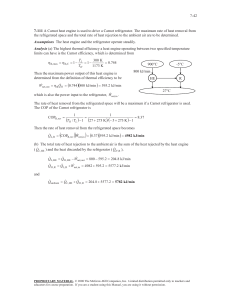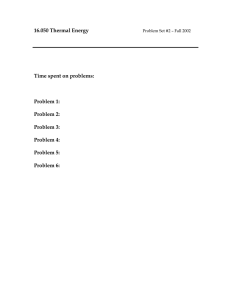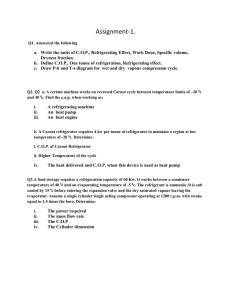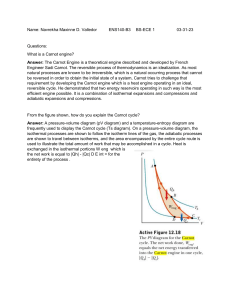Homework #18
advertisement
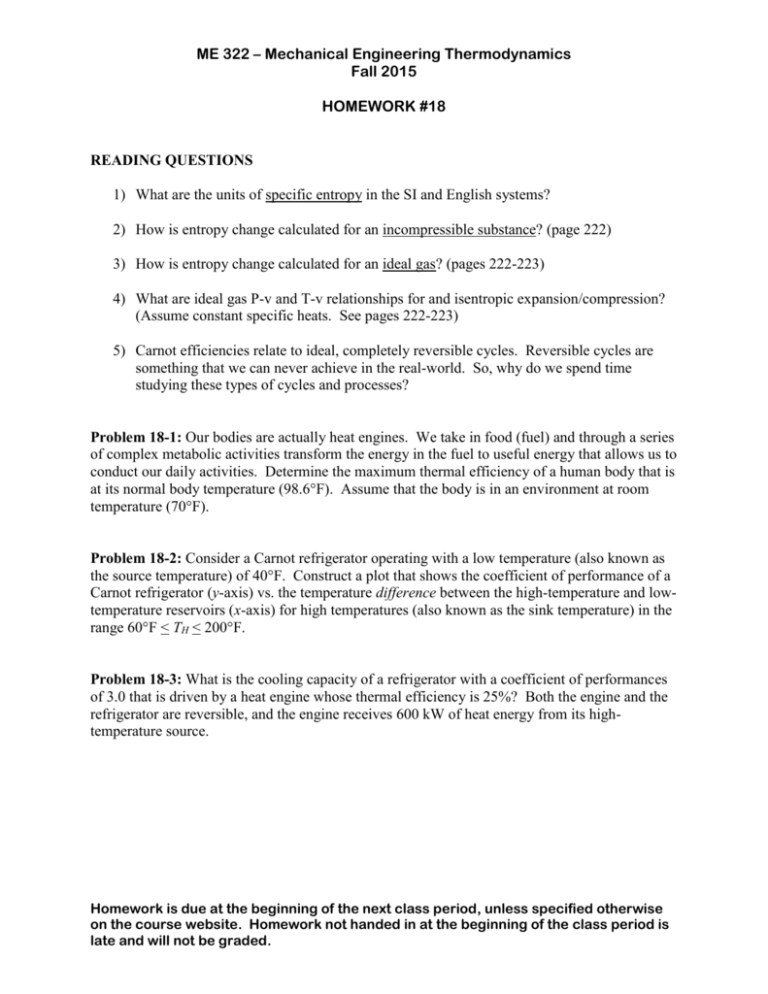
ME 322 – Mechanical Engineering Thermodynamics Fall 2015 HOMEWORK #18 READING QUESTIONS 1) What are the units of specific entropy in the SI and English systems? 2) How is entropy change calculated for an incompressible substance? (page 222) 3) How is entropy change calculated for an ideal gas? (pages 222-223) 4) What are ideal gas P-v and T-v relationships for and isentropic expansion/compression? (Assume constant specific heats. See pages 222-223) 5) Carnot efficiencies relate to ideal, completely reversible cycles. Reversible cycles are something that we can never achieve in the real-world. So, why do we spend time studying these types of cycles and processes? Problem 18-1: Our bodies are actually heat engines. We take in food (fuel) and through a series of complex metabolic activities transform the energy in the fuel to useful energy that allows us to conduct our daily activities. Determine the maximum thermal efficiency of a human body that is at its normal body temperature (98.6°F). Assume that the body is in an environment at room temperature (70°F). Problem 18-2: Consider a Carnot refrigerator operating with a low temperature (also known as the source temperature) of 40°F. Construct a plot that shows the coefficient of performance of a Carnot refrigerator (y-axis) vs. the temperature difference between the high-temperature and lowtemperature reservoirs (x-axis) for high temperatures (also known as the sink temperature) in the range 60°F < TH < 200°F. Problem 18-3: What is the cooling capacity of a refrigerator with a coefficient of performances of 3.0 that is driven by a heat engine whose thermal efficiency is 25%? Both the engine and the refrigerator are reversible, and the engine receives 600 kW of heat energy from its hightemperature source. Homework is due at the beginning of the next class period, unless specified otherwise on the course website. Homework not handed in at the beginning of the class period is late and will not be graded.



